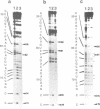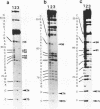Abstract
Individual species of tRNA from Escherichia coli were treated with hydrazine/3 M NaCl to modify cytidine residues. The chemically modified tRNAs were used as substrate for ATP/CTP: tRNA nucleotidyltransferases from E. coli and yeast, with [alpha-32P]ATP as cosubstrate. tRNAs that were labeled were analyzed for their content of modified cytidines. Cytidines at positions 74 and 75 were found to be required chemically intact for interaction with both enzymes. C56 was also required intact by the E. coli enzyme in all tRNAs, and by the yeast enzyme in several instances. C61 was found to be important in seven of 14 tRNAs with the E. coli enzyme but only in four of 13 tRNAs with that from yeast. Our results support a model in which nucleotidyltransferase extends from the 3' end of its tRNA substrate across the top of the stacked array of bases in the accepter- and psi-stems to the corner of the molecule where the D- and psi-loops are juxtaposed.
Full text
PDF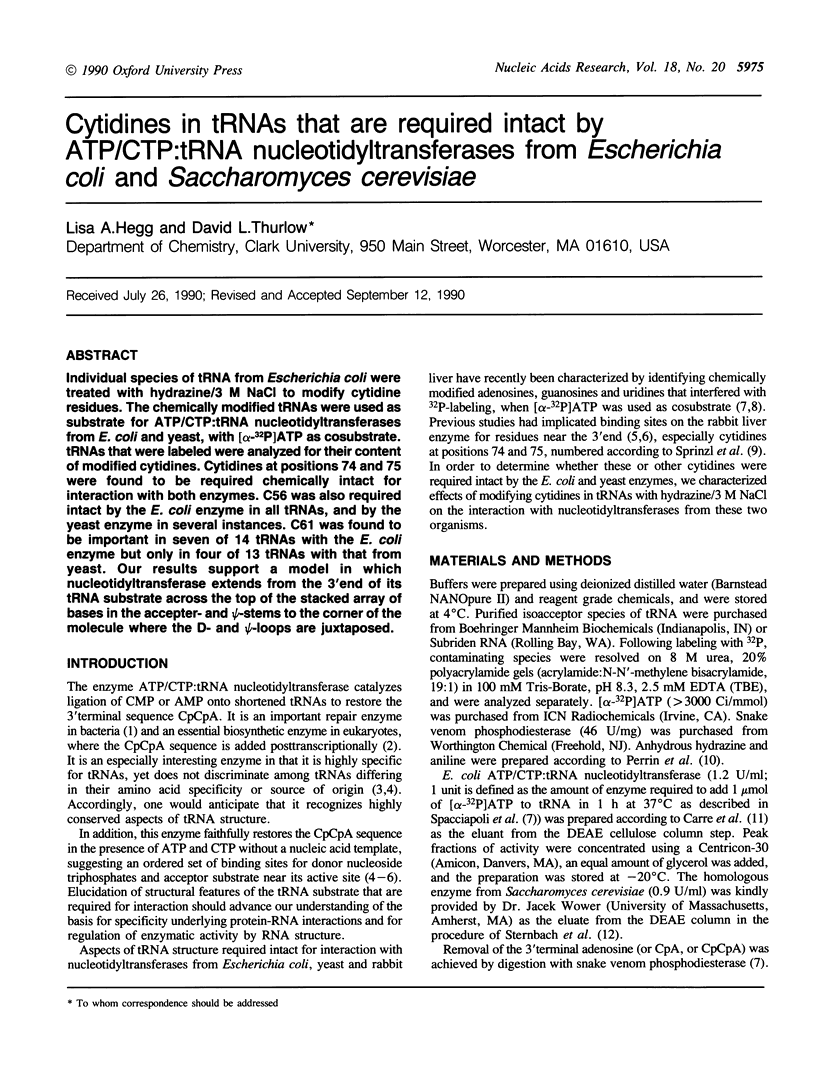
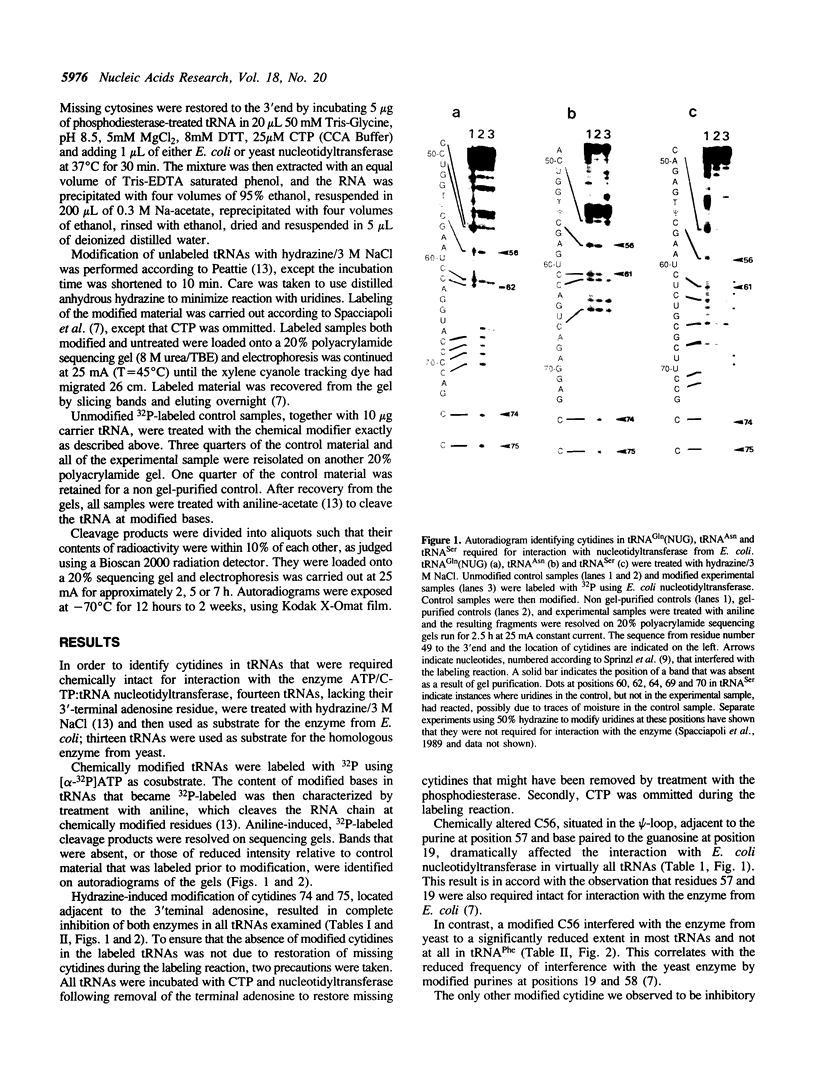
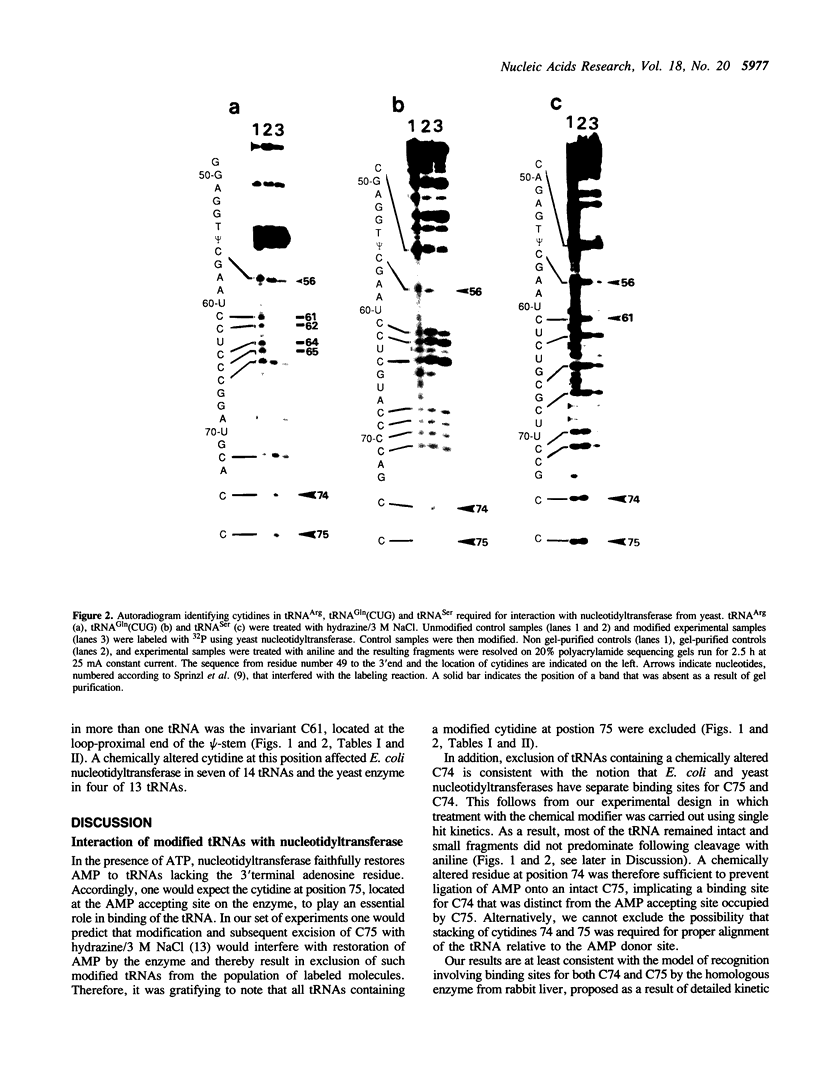
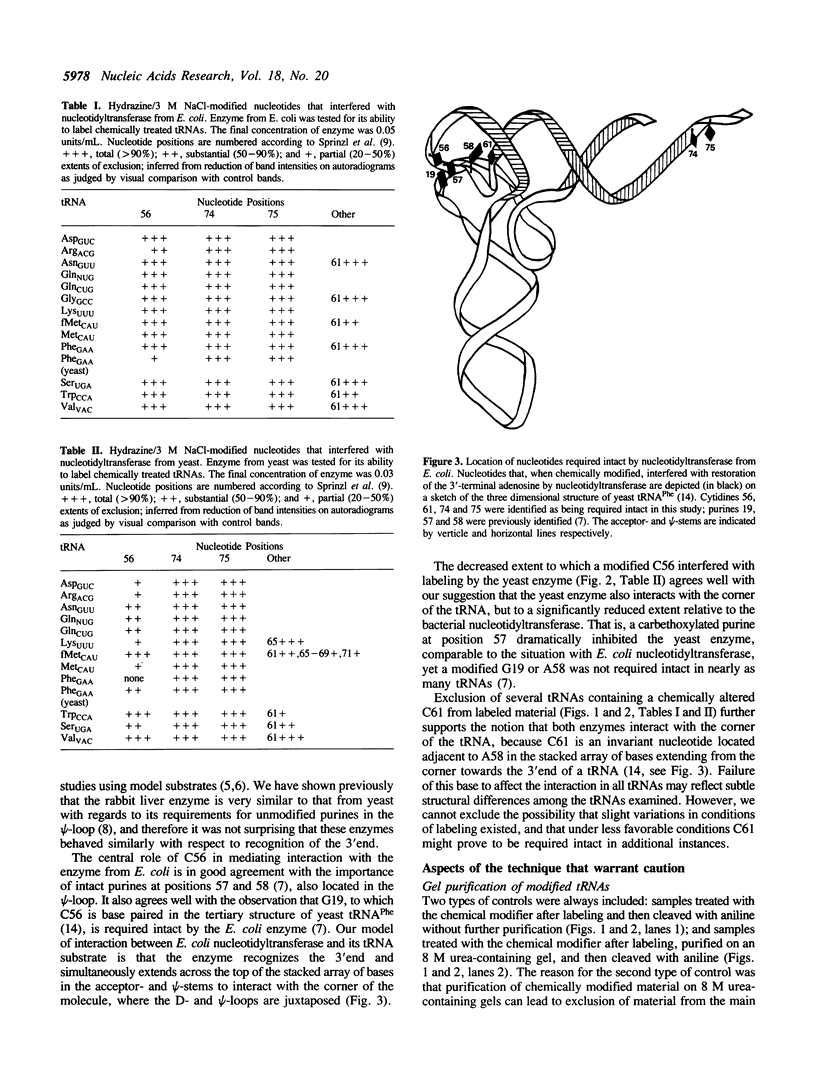
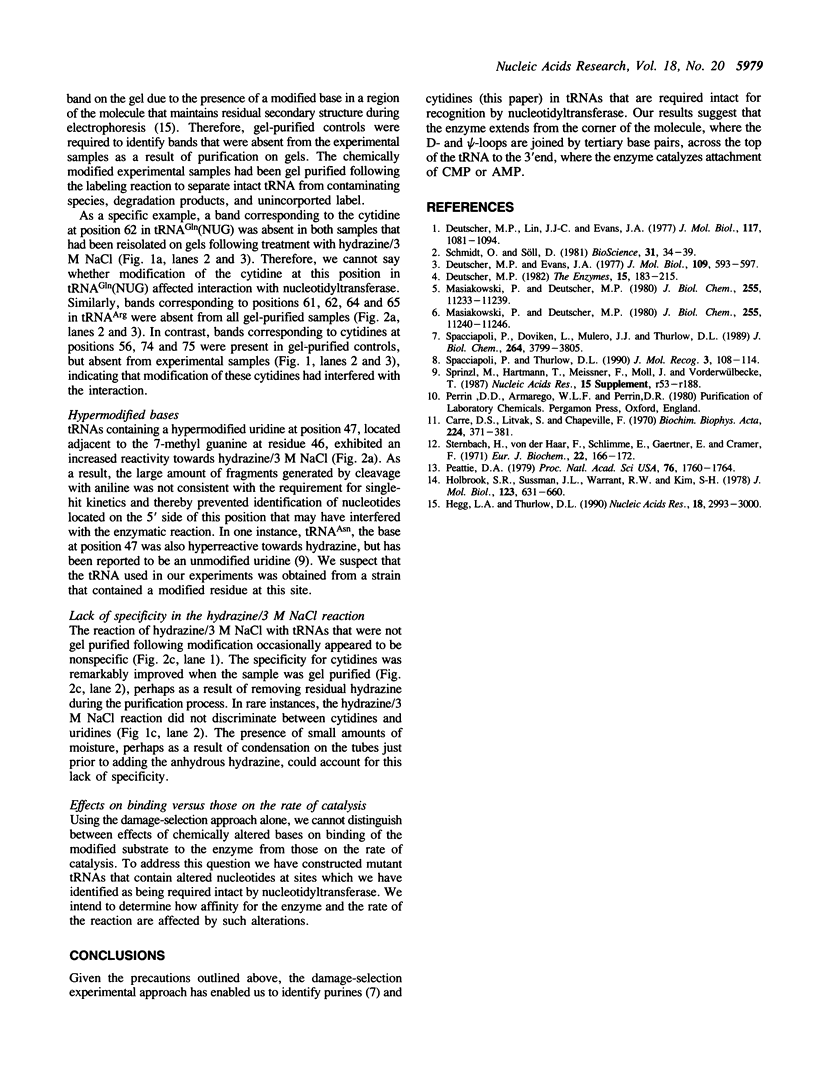
Images in this article
Selected References
These references are in PubMed. This may not be the complete list of references from this article.
- Carre D. S., Litvak S., Chapeville F. Purification and properties of Escherichia coli CTP (ATP)-tRNA nucleotidyltransferase. Biochim Biophys Acta. 1970 Dec 14;224(2):371–381. doi: 10.1016/0005-2787(70)90570-8. [DOI] [PubMed] [Google Scholar]
- Deutscher M. P., Evans J. A. Transfer RNA nucleotidyltransferase repairs all transfer RNAs randomly. J Mol Biol. 1977 Feb 5;109(4):593–597. doi: 10.1016/s0022-2836(77)80093-4. [DOI] [PubMed] [Google Scholar]
- Deutscher M. P., Lin J. J., Evans J. A. Transfer RNA metabolism in Escherichia coli cells deficient in tRNA nucleotidyltransferase. J Mol Biol. 1977 Dec 25;117(4):1081–1094. doi: 10.1016/s0022-2836(77)80014-4. [DOI] [PubMed] [Google Scholar]
- Hegg L. A., Thurlow D. L. Residual tRNA secondary structure in 'denaturing' 8M urea/TBE polyacrylamide gels: effects on electrophoretic mobility and dependency on prior chemical modification of the tRNA. Nucleic Acids Res. 1990 May 25;18(10):2993–3000. doi: 10.1093/nar/18.10.2993. [DOI] [PMC free article] [PubMed] [Google Scholar]
- Holbrook S. R., Sussman J. L., Warrant R. W., Kim S. H. Crystal structure of yeast phenylalanine transfer RNA. II. Structural features and functional implications. J Mol Biol. 1978 Aug 25;123(4):631–660. doi: 10.1016/0022-2836(78)90210-3. [DOI] [PubMed] [Google Scholar]
- Masiakowski P., Deutscher M. P. Dissection of the active site of rabbit liver tRNA nucleotidyltransferase. Specificity and properties of subsites for donor nucleotide triphosphates. J Biol Chem. 1980 Dec 10;255(23):11240–11246. [PubMed] [Google Scholar]
- Masiakowski P., Deutscher M. P. Dissection of the active site of rabbit liver tRNA nucleotidyltransferase. Specificity and properties of the tRNA and acceptor subsites determined with model acceptor substrates. J Biol Chem. 1980 Dec 10;255(23):11233–11239. [PubMed] [Google Scholar]
- Peattie D. A. Direct chemical method for sequencing RNA. Proc Natl Acad Sci U S A. 1979 Apr;76(4):1760–1764. doi: 10.1073/pnas.76.4.1760. [DOI] [PMC free article] [PubMed] [Google Scholar]
- Spacciapoli P., Doviken L., Mulero J. J., Thurlow D. L. Recognition of tRNA by the enzyme ATP/CTP:tRNA nucleotidyltransferase. Interference by nucleotides modified with diethyl pyrocarbonate or hydrazine. J Biol Chem. 1989 Mar 5;264(7):3799–3805. [PubMed] [Google Scholar]
- Sternbach H., von der Haar F., Schlimme E., Gaertner E., Cramer F. Isolation and properties of tRNA nucleotidyl transferase from yeast. Eur J Biochem. 1971 Sep 24;22(2):166–172. doi: 10.1111/j.1432-1033.1971.tb01528.x. [DOI] [PubMed] [Google Scholar]



